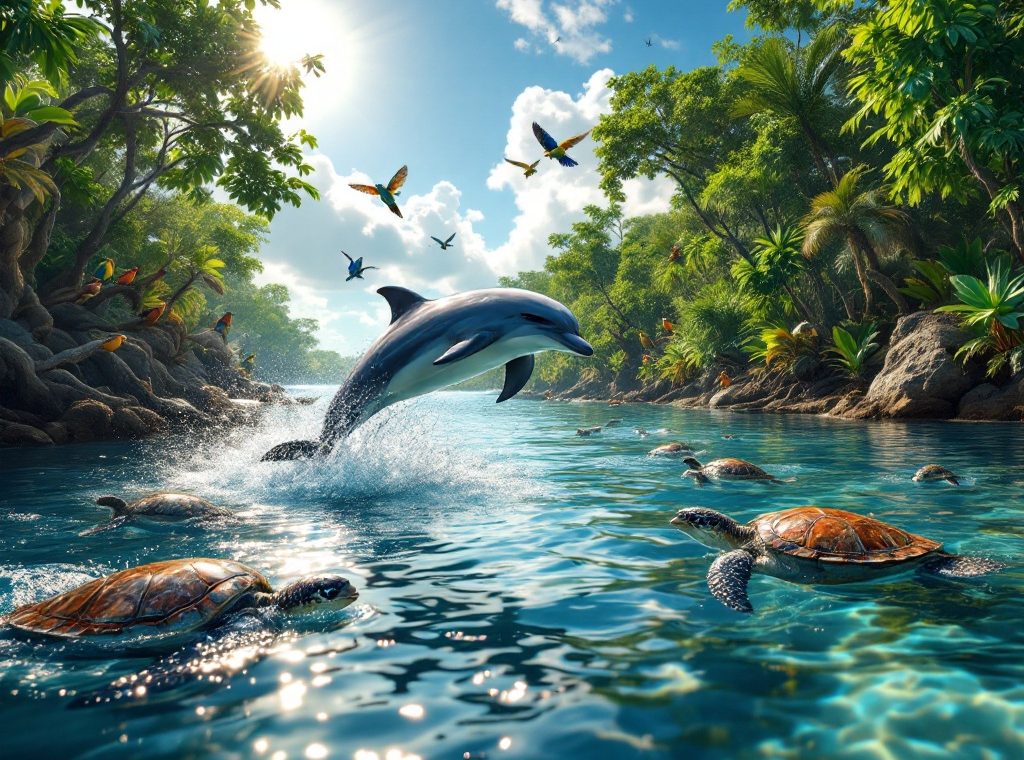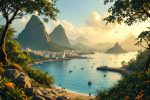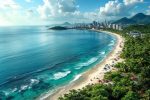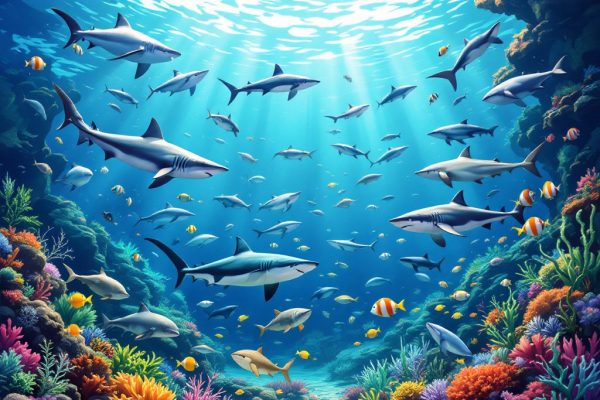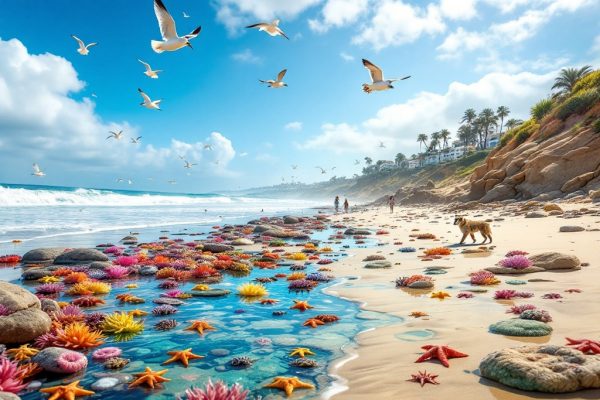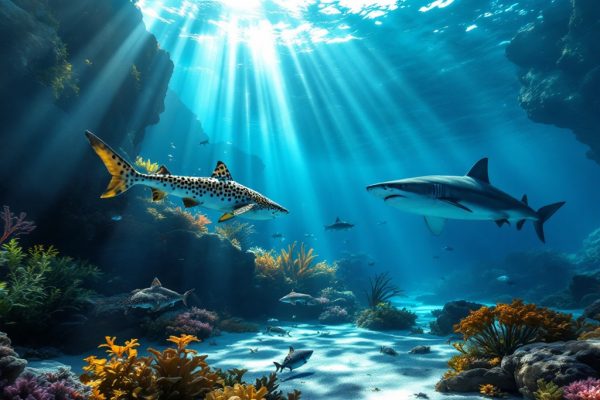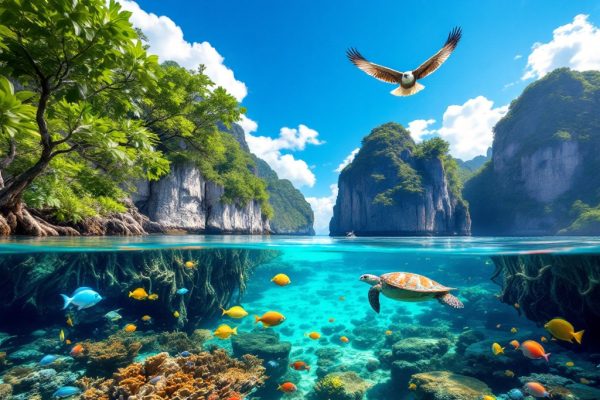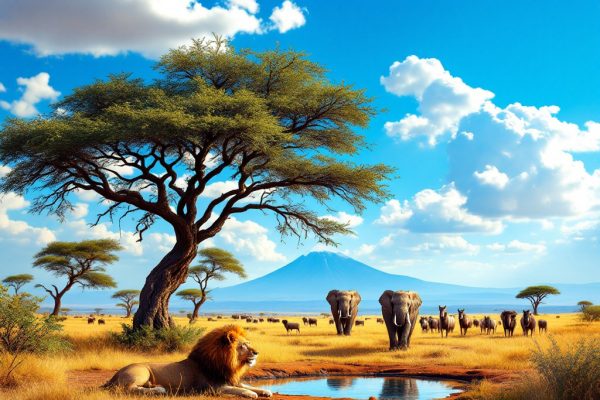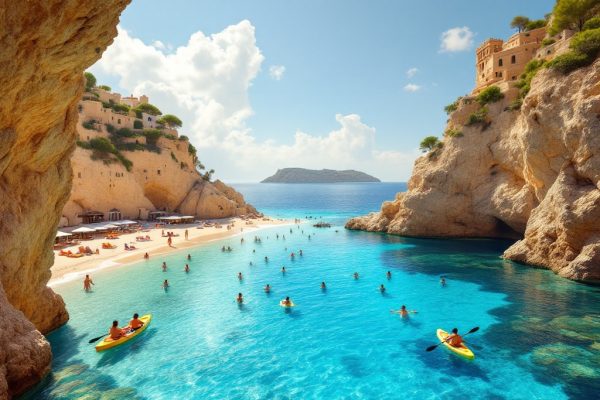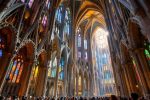Wild Animals in the Guanabara Bay: The Brazilian Fauna
Discover the vibrant wildlife of Brazil’s Guanabara Bay, home to iconic Guiana dolphins, endangered sea turtles, and diverse bird species. Learn about the crucial role of mangrove forests and the challenges facing this vital ecosystem. Explore ongoing conservation efforts and how you can contribute to protecting this unique natural treasure for future generations. Dive in and uncover the wonders of Guanabara Bay!
Important information
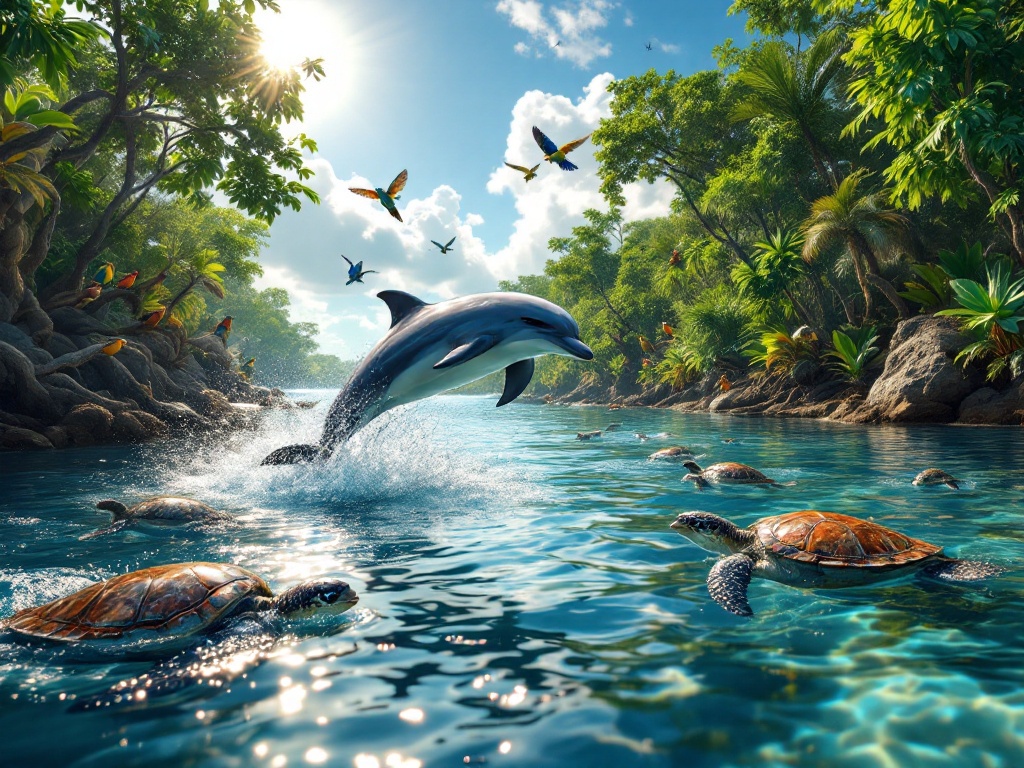
- Guanabara Bay supports a diverse ecosystem, including Guiana dolphins, sea turtles, fish, birds, and even capybaras and jaguars in surrounding areas.
- The Guiana dolphin population in the bay has drastically declined from over 400 in the 1980s to less than 40 today, making them critically endangered.
- Pollution and urbanization pose major threats to the bay’s biodiversity, impacting water quality and degrading crucial habitats.
- Conservation efforts focus on habitat restoration, pollution mitigation, and community engagement to protect the bay’s wildlife.
- Protected areas like the Guanabara Ecological Station and Guapi-Mirim Environmental Protection Area are vital for preserving the bay’s unique biodiversity.
Wild Animals in the Guanabara Bay: The Brazilian Fauna
Guanabara Bay boasts a thriving ecosystem. Its waters support a rich variety of fish, crustaceans, and mollusks, with dolphins and sea turtles making frequent appearances. A diverse array of birdlife, including herons, kingfishers, and ibises, flourishes along the coastline. Further inland, the bay’s biodiversity extends to capybaras and even the rare maned wolf. The bay’s crucial mangrove forests play a vital role in sustaining this abundant wildlife.
Iconic Marine Species in Guanabara Bay
Rio de Janeiro’s Guanabara Bay is a vibrant ecosystem teeming with life, including the iconic Guiana dolphin. Fish, crustaceans, and mollusks flourish in its waters, providing a haven for threatened sea turtles like the hawksbill, as well as diverse bird species.
Guiana Dolphins: Past and Present
Guiana dolphins, inhabiting Guanabara Bay, have experienced a devastating population decline. While over 400 of these dolphins flourished in the 1980s, their numbers have plummeted to fewer than 40 today. This dramatic reduction signifies they’re critically endangered and facing the very real possibility of local extinction.
Sea Turtles and Their Habitat
Guanabara Bay provides crucial habitats for various sea turtle species, including green sea turtles, loggerheads, and hawksbills. These turtles depend on the bay’s coastal areas for nesting and its nutrient-rich waters for foraging. However, pollution and habitat degradation severely threaten these turtle populations, impacting their reliance on the bay’s seagrass beds and other vital marine ecosystems. The bay’s health is critical for these turtles’ survival.
Presence of Whales and Botos
Guanabara Bay supports a rich biodiversity, including whales and botos (Guiana dolphins). This vital ecosystem provides essential resources for these species, but pollution and urbanization pose significant threats to their survival.
Terrestrial Wildlife in the Surrounding Areas
The lands around Guanabara Bay are a haven for diverse wildlife. Capybaras, the world’s largest rodents, roam freely, while various monkey species inhabit the surrounding forests. The area also supports a rich diversity of other creatures, including small mammals, reptiles, amphibians, and thriving insect populations. Each plays a vital role in this vibrant ecosystem.
Jaguars and Their Ecosystem
Jaguars, apex predators near Guanabara Bay, play a crucial role in regulating prey animal populations. This regulation influences the plant life and overall environment, ultimately enhancing biodiversity. A thriving jaguar population indicates a healthy and flourishing ecosystem.
Capybaras and Their Role in the Environment
Capybaras, essential herbivores in the Guanabara Bay ecosystem, graze on various plants, including aquatic vegetation, grasses, and other foliage. This feeding behavior shapes the plant community and influences nutrient cycling. These large rodents are a crucial food source for predators like jaguars and anacondas, making them vital to the food web. Capybaras significantly contribute to the biodiversity and health of the Guanabara Bay region.
Avian Diversity: Toucans, Herons, and More
Guanabara Bay flourishes as a dynamic ecosystem, supporting a rich variety of bird species. Toucans, herons, and egrets are common sights, while kingfishers and seagulls also call the bay home. These birds depend on the bay’s plentiful resources for food and nesting. Mangroves offer shelter, and rocky outcrops provide safe havens for raising their young. This thriving environment is vital for sustaining the remarkable diversity of birdlife, making habitat preservation essential for their continued survival.
Environmental Threats and Conservation
Guanabara Bay’s biodiversity is in danger. Coastal degradation and overfishing have drastically reduced marine life, pushing fish populations to critical levels.
Impact of Urbanization and Pollution
Guanabara Bay’s ecosystem faces severe threats from urbanization and pollution. Human activities introduce harmful pollutants, including sewage, industrial waste, and plastic debris, which degrade water quality and harm marine life. This pollution reduces biodiversity and threatens the bay’s fragile ecological balance. Urban sprawl intensifies the issue by encroaching on natural habitats, displacing wildlife, and impacting fish populations, ultimately disrupting the food web. Though the bay’s health is declining, solutions like stricter pollution controls and habitat restoration offer hope for its future, ensuring its preservation for future generations.
Conservation Areas: Guanabara Ecological Station and Guapi-Mirim
Guanabara Bay’s biodiversity relies heavily on two protected areas: the Guanabara Ecological Station and the Guapi-Mirim Environmental Protection Area. These areas play a crucial role in managing the bay and its surrounding environments, protecting diverse species and habitats. Ongoing conservation efforts, such as pollution reduction and habitat restoration, are proving effective in preserving the bay’s unique biodiversity. These sanctuaries are essential for the survival of the bay’s wildlife.
Conservation Efforts and Future Prospects
Guanabara Bay faces serious environmental challenges, but ongoing conservation efforts provide hope. These initiatives focus on restoring crucial habitats and protecting endangered species like the Guiana dolphin. Projects aim to improve water quality and actively reforest mangrove areas. Community involvement, sustainable tourism development, and stricter environmental regulations are crucial for long-term success. These combined efforts seek to revitalize the bay, promoting a thriving ecosystem and rich biodiversity.
Wildlife Conservation Strategies
Guanabara Bay’s wildlife faces serious threats, but dedicated conservation efforts offer a beacon of hope. Protecting the bay’s rich biodiversity involves several key strategies, starting with habitat restoration. Safeguarding vital areas, such as the Guanabara Ecological Station and Guapi-Mirim Environmental Protection Area, provides refuge for numerous species. Pollution mitigation is another critical component. Initiatives targeting industrial and domestic waste aim to improve water quality, directly benefiting Guiana dolphins, sea turtles, and diverse bird species. A cleaner environment allows these animals to thrive. Finally, community engagement plays a vital role. Public awareness campaigns promote responsible practices and encourage environmental stewardship. Sustainable fishing is also essential, and community involvement ensures long-term success. Monitoring programs track progress and inform adaptive management strategies, all working together to protect Guanabara Bay’s unique wildlife. Protecting this unique ecosystem requires a multifaceted approach, encompassing habitat restoration, pollution control, and community engagement.
Habitat Restoration. Restoring damaged habitats is crucial for the survival of many species. Initiatives focus on revitalizing mangroves, salt marshes, and other vital ecosystems within the bay.
Pollution Mitigation. Reducing pollution from industrial and domestic sources is essential to improving water quality. This directly benefits the health of Guiana dolphins, sea turtles, and various bird species.
Community Engagement. Engaging local communities in conservation efforts is vital for long-term success. Public awareness campaigns promote responsible environmental practices and encourage stewardship.
Challenges in Maintaining Ecosystem Health
Human activities are placing immense pressure on Guanabara Bay’s delicate ecosystem. Pollution and urban development disrupt its fragile balance, leading to an alarming decline in marine life. Iconic species, such as Guiana dolphins and sea turtles, are dwindling, with many facing the threat of local extinction. The decline in these iconic species serves as a stark reminder of the urgent need for conservation efforts in Guanabara Bay.

